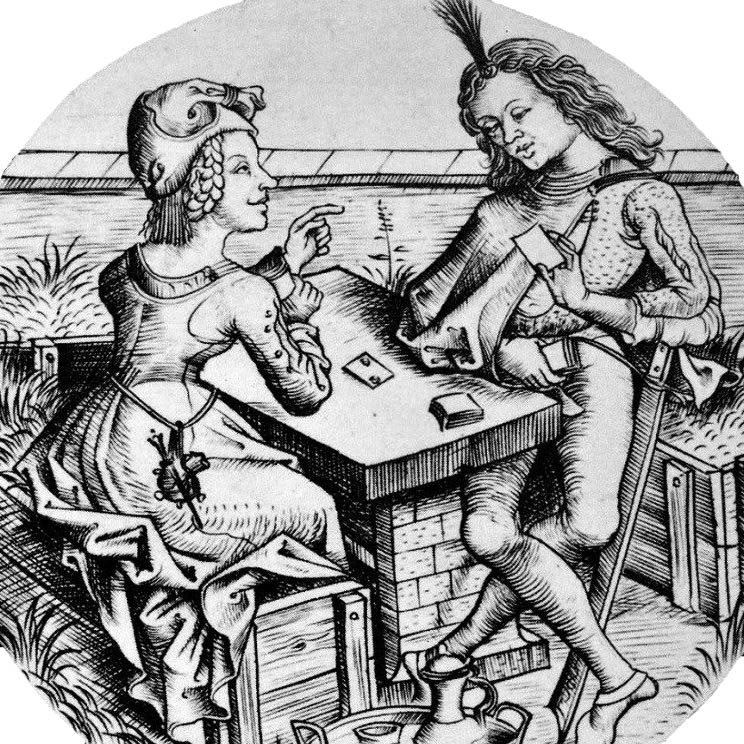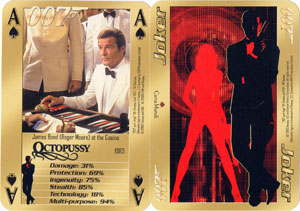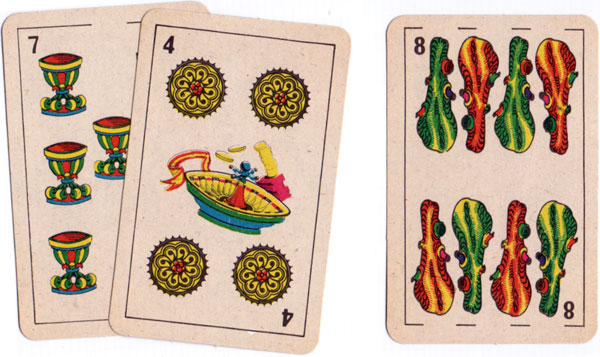The Allure of Baccarat
Today most people know baccarat as the casino game for James Bond
Ask the average punter to explain the game of baccarat and you probably won’t get much of an answer. Yet it is just about the easiest table game to play on the casino floor. Fewer than one percent of all gamblers choose to sit at the baccarat tables when visiting a casino. Yet the wins and losses from baccarat are so important to an operator’s bottom line that the results are reported in a special section of quarterly earnings reports to investors.

Above: medieval card players.
What is going on with this seemingly mysterious 600-year old gambling game?
The Story of Baccarat
Probing back through the fog of history Italian gambler Felix Falguerein is generally given credit for inventing baccara in the 15th century. The game was derived from tarot cards and the name translates roughly to “zero” since all the face cards and the 10-pip cards have a value of zero in game play. The card game found a following among French nobility - and also a trailing “t” - and France is where it was mostly played for hundreds of years.

Above: James Bond 007→
By the time baccarat began spreading around the world at the end of the 19th century it could not make much headway against another ancient game that was becoming popular in gambling houses - blackjack. Today most people know baccarat as the casino game of choice for Ian Fleming’s super spy James Bond and the game in the casino played in separate sections by high rollers behind velvet ropes.
What is the Appeal of Baccarat to High Rollers?
The quick answer is fast play and high stakes. Baccarat is a comparative hand game - the Banker versus the Player. The only decision to be made by the bettor is to stake the Banker, the Player or a Tie. Game play is dictated only by the rules of baccarat and bettors are not involved. Once all bets are down two cards are dealt each to the “Banker” and to the “Player” with the higher of the two hands being the winner.

Above: a perfect score. The player was dealt a 7 and 4 giving a score of 1 so a third card was requested and luckily it was 8 making a score of 9. This would usually win the round.
The highest possible score is nine; if the values of the two cards exceed single digits the right hand number is used for the score. For example, an eight and a seven totals 15 and scores 5. If the two cards equal an eight or nine the hand is called a “natural” and declared a winner. If no natural is dealt third cards may be delivered depending on the pre-set rules until a winner is determined.
Bets on the Player payoff at 1:1 and backers of the Banker are rewarded at odds of 19:20. The house scoops a 5% commission. Ties payout at 8 to 1 in most casinos and sometimes 9 to 1 in Europe. The simplicity of the betting and quick resolutions to hands attract high rollers who are often greeted by extremely high table limits - bets of $100,000 per hand are not unusual in baccarat.
What is the Smart Play in Baccarat?
The house edge in baccarat is a shade over 1% for bets on either the Player or Banker. The Banker is a slightly better play, winning .507% of the time to the Player’s .493%. Often players are seen writing down outcomes in a session of baccarat in an attempt to discern a “hot” or “cold” run for the Banker or Player. But each hand is an independent event unrelated to previous outcomes. The only truly poor play at the baccarat table is to gamble on the Tie - the house edge is 15% on this bet.
How Can Low Rollers Play Baccarat?
In the 1950s a Nevada gambler and writer named Tommy Renzoni brought baccarat to Las Vegas. You cannot simplify the rules any more than they already exist but you can reduce the table minimums and shrink the table to resemble a classic seven-seat blackjack table - the arrangement that came to be known as Mini Baccarat.
In the Internet age Mini Baccarat has become a staple in online software suites of gambling games. The game of chance favoured by royalty can even be sampled in free play mode. With the advent of live dealer streaming players can enjoy the experience of sitting in behind the velvet ropes at the baccarat table without the benefit of an unlimited bankroll.
FURTHER REFERENCES
Center for Gaming Research: History of Baccarat→
Wikipedia: Gambling in Italy→

By Simon Wintle
Member since February 01, 1996
I am the founder of The World of Playing Cards (est. 1996), a website dedicated to the history, artistry and cultural significance of playing cards and tarot. Over the years I have researched various areas of the subject, acquired and traded collections and contributed as a committee member of the IPCS and graphics editor of The Playing-Card journal. Having lived in Chile, England, Wales, and now Spain, these experiences have shaped my work and passion for playing cards. Amongst my achievements is producing a limited-edition replica of a 17th-century English pack using woodblocks and stencils—a labour of love. Today, the World of Playing Cards is a global collaborative project, with my son Adam serving as the technical driving force behind its development. His innovative efforts have helped shape the site into the thriving hub it is today. You are warmly invited to become a contributor and share your enthusiasm.
Related Articles
Most Popular
Our top articles from the past 28 days

